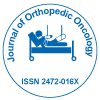Nuestro grupo organiza más de 3000 Series de conferencias Eventos cada año en EE. UU., Europa y América. Asia con el apoyo de 1.000 sociedades científicas más y publica más de 700 Acceso abierto Revistas que contienen más de 50.000 personalidades eminentes, científicos de renombre como miembros del consejo editorial.
Revistas de acceso abierto que ganan más lectores y citas
700 revistas y 15 000 000 de lectores Cada revista obtiene más de 25 000 lectores
Indexado en
- Google Académico
- Búsqueda de referencia
- Universidad Hamdard
- EBSCO AZ
- OCLC-WorldCat
- publones
- Pub Europeo
- ICMJE
Enlaces útiles
Revistas de acceso abierto
Comparte esta página
Abstracto
Breif Note on Types of Osteochondrodysplasias and Their Diagnostic Methods
Chung Wang
Osteochondrodysplasias (OCDs) refer to a group of genetic disorders characterized by abnormal growth and development of bones and joints. OCDs affect the skeleton’s cartilage and bone tissues, impeding proper growth and contributing to bone abnormalities. These disorders can range from mild to severe, affecting both humans and animals. OCDs, also known as skeletal dysplasias or chondrodysplasias, are caused by genetic mutations that alter bone and cartilage development. The most common symptoms of OCDs are short stature, disproportionate body parts, and joint deformities. These dysplasias can involve one or several bones, which mean that an individual with OCD can have normal bone growth in some parts of their body but abnormal growth in others. This can lead to a range of complications, including joint pain, arthritis, and spinal cord compression. Additionally, some forms of OCD can cause hearing loss, vision problems, and heart defects. There are over 350 known forms of OCDs, which can be classified based on the area of the body they affect or the type of bone and cartilage defect present. The classification by affected area groups OCDs into the following categories:
Revistas por tema
- Agricultura y acuicultura
- Alimentación y Nutrición
- Bioinformática y biología de sistemas
- Bioquímica
- Ciencia de los Materiales
- Ciencia general
- Ciencias Ambientales
- Ciencias Clínicas
- Ciencias farmacéuticas
- Ciencias Médicas
- Ciencias Sociales y Políticas
- Ciencias Veterinarias
- Enfermería y atención sanitaria
- Física
- Genética y biología molecular
- Geología y Ciencias de la Tierra
- Ingeniería
- Inmunología y Microbiología
- Química
Revistas clínicas y médicas
- Anestesiología
- Biología Molecular
- Cardiología
- Cirugía
- Cuidado de la salud
- Dermatología
- Diabetes y Endocrinología
- Enfermedades infecciosas
- Enfermería
- Gastroenterología
- Genética
- Inmunología
- Investigación clínica
- Medicamento
- Microbiología
- Neurología
- Odontología
- Oftalmología
- Oncología
- Pediatría
- Toxicología

 English
English  Chinese
Chinese  Russian
Russian  German
German  French
French  Japanese
Japanese  Portuguese
Portuguese  Hindi
Hindi